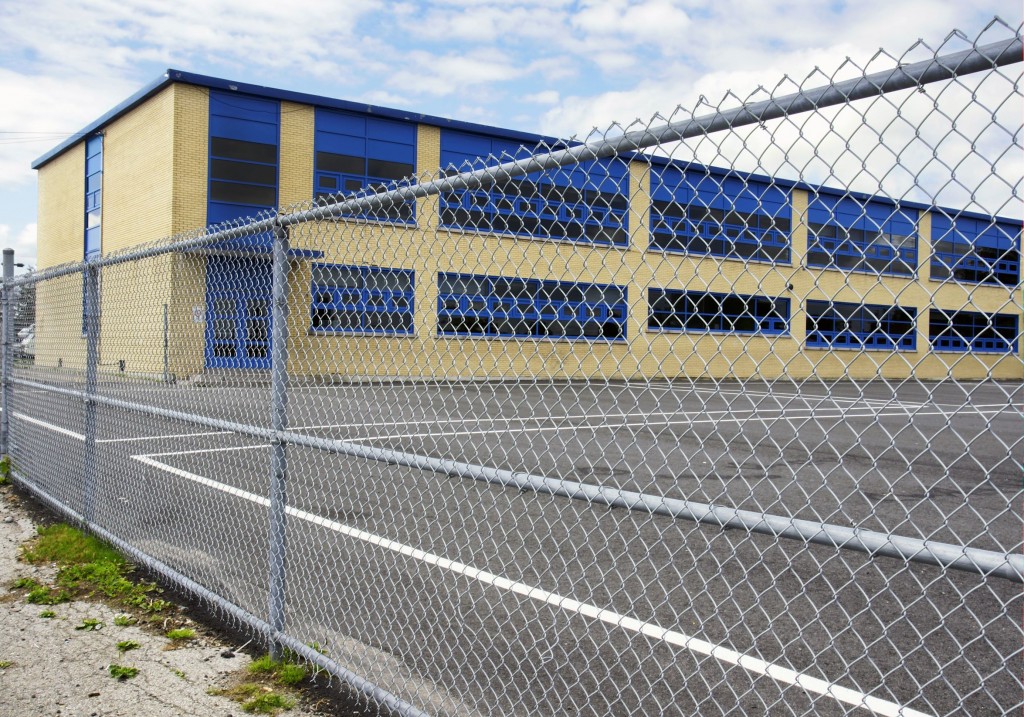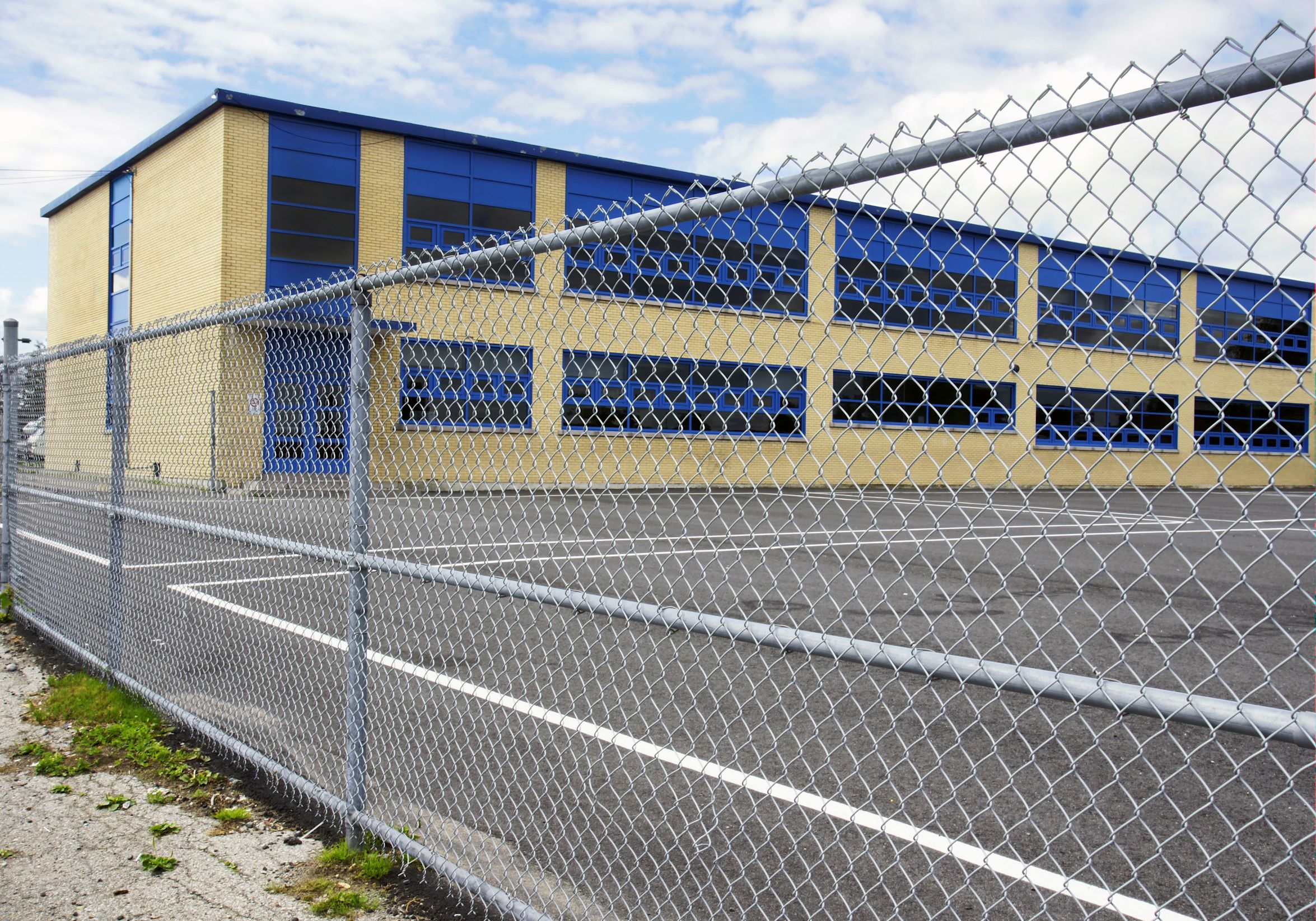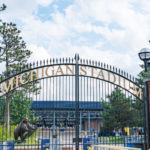This post was published in Doors & Hardware
 A few years ago, I worked as the hardware consultant on a data center project with extremely high security. On the interior door openings, there were many challenges and conflicts between the code requirements which mandated free egress and the need for security methods that included interlocks, delayed egress, and several levels of access control.
A few years ago, I worked as the hardware consultant on a data center project with extremely high security. On the interior door openings, there were many challenges and conflicts between the code requirements which mandated free egress and the need for security methods that included interlocks, delayed egress, and several levels of access control.
A security fence surrounded the building, with access control readers at the vehicular and pedestrian entrances to the site. In order to maintain this secure perimeter, the security consultant did not want to allow free egress through the gates which led to the public way. Because the paths from the building’s exterior doors to the public way are part of the means of egress (this portion is called the exit discharge), any gates encountered before reaching the public way would typically be required to comply with the egress code requirements. These include the mandates for one operation to release the latch(es), no special knowledge or effort, no tight grasping/pinching/twisting, and operable hardware mounted between 34 and 48 inches above the floor or ground.
Exterior gates are notoriously difficult to secure while providing free egress when required by the model codes. Locking / latching hardware may be defeated from the secure side of the gate, and many gate designs cannot easily accommodate the door closers needed to keep the gates closed and latched. Electrified hardware used on exterior gates can create additional challenges, due to exposure to the weather as well as unauthorized access to the release devices (like actuating the motion-sensor release for an electromagnetic lock from the secure side of the gate).
With today’s focus on security for schools, office buildings, and other types of facilities, it will likely become more common to see a building completely surrounded by a fence. Each opening in the fence that is equipped with hardware allowing free egress becomes a potential access point – for authorized or unauthorized individuals. While I am not recommending that we surround every building with a fence, or that there should be no gates to provide egress from the contained area, the International Building Code (IBC) does address this situation.
In recent editions of the IBC, this is covered in section 1028.5 – Access to a Public Way, which requires the exit discharge to provide direct and unobstructed access to a public way; typically the public way is a street or alley. The exception to this section states that when access to a public way can’t be provided, a safe dispersal area is required, where building occupants can wait for fire department assistance. This safe dispersal area – a location within the fenced area or enclosed court – must meet the following requirements:
- The safe dispersal area must be large enough to provide at least 5 square feet of space for each building occupant (see below for variations on this requirement for stadiums and I-2 occupancies).
- The area must be on the same lot and at least 50 feet away from the building, accessed by a safe and unobstructed path.
- The area must be permanently maintained and identified as a safe dispersal area, and cannot be used for another purpose such as parking, storage, or temporary structures.
If these criteria are met, the fence surrounding the building would not be required to have gates that allow free egress, as the building occupants can gather safely in the enclosed area and wait for emergency responders to arrive.
For stadiums, the IBC (Section 1010.2.1 in the 2015 and 2018 editions, Section 1010.4.1 in the 2021 IBC) describes a safe dispersal area that provides at least 3 square feet per occupant, located a minimum of 50 feet from the enclosed area of the stadium. If this safe dispersal area is provided, and if the stadium gates are under constant supervision when the stadium is occupied by the public, then panic hardware is not required to be installed on the stadium gates.
The IBC addresses secured yards for Group I-2 occupancies (hospitals, nursing homes, psychiatric hospitals, detox facilities, and foster care facilities) in a separate section of the code (407.9 in the 2015 IBC, 407.10 in the 2018 and 2021). This section requires the safe dispersal area for I-2 occupancies to provide at least 30 net square feet for each bed and stretcher care recipient and 6 net square feet for ambulatory care recipients and other building occupants; as with other occupancy types, the safe dispersal area must be at least 50 feet away from the building. The use of a fenced area that is sufficiently sized for use as a safe dispersal area can be especially helpful for memory care units and other mental health facilities, where a secured yard is often provided for the use of care recipients. In an emergency, this enclosure can provide a safe alternative to allowing care recipients to freely evacuate to a public way.
NFPA 101 – The Life Safety Code, includes some language similar to the IBC, but only in relation to Detention and Correctional occupancies. In these facilities, sections 22.2.7 (new) and 23.2.7 (existing) allow exits to discharge into an enclosed court. Not more than two walls of the courtyard may be walls of the building, and the enclosed court must be large enough to provide a net area of 15 square feet per person at least 50 feet from the building.
The local codes and the Authority Having Jurisdiction (AHJ) should be consulted to verify the requirements of a specific jurisdiction. For sites where the requirements for a safe dispersal area cannot be met, gates which are properly sized, remotely located, and equipped with hardware that meets the egress requirements will likely be needed.
You need to login or register to bookmark/favorite this content.








The area must be permanently maintained and identified as a safe dispersal area, and cannot be used for another purpose such as parking, storage, or temporary structures.
Here in the Midwest….That means the area MUST be plowed of all snow while maintaining the same 5 sf/occupant!!
Can a safe dispersal area be a parking lot?
IBC 2021 Section 1028.5 Exception 3 does not specifically state occupants cannot disperse to a “parking lot”. In fact, the public way can be consider a street. Please see the code references/definition below.
Definition: PUBLIC WAY. A street, alley or other parcel of land
open to the outside air leading to a street, that has been
deeded, dedicated or otherwise permanently appropriated to
the public for public use and which has a clear width and
height of not less than 10 feet (3048 mm).
Section 1028.5
1028.5 Access to a public way. The exit discharge shall provide
a direct and unobstructed access to a public way.
Exception: Where access to a public way cannot be provided,
a safe dispersal area shall be provided where all of
the following are met:
1. The area shall be of a size to accommodate not less
than 5 square feet (0.46 m2) for each person.
2. The area shall be located on the same lot not less
than 50 feet (15 240 mm) away from the building
requiring egress.
3. The area shall be permanently maintained and identified
as a safe dispersal area.
4. The area shall be provided with a safe and unobstructed
path of travel from the building.
Good question, Joe!
This is what the IBC Commentary says:
There are instances where the path of travel to the public way is not safe or not achievable because of site constraints or security concerns. The provisions in this section specify what would constitute a safe area to allow occupants of a building to assemble in an emergency. The requirement of 5 square feet (0.46 m2) would allow adequate space for standing persons as well as some space for persons in wheelchairs or on stretchers. Everyone who is expected to wait in this dispersal area for fire department assistance must be a minimum of 50 feet (15 240 mm) away from the building. This safe dispersal area must always remain open and not be used for parking, storage or temporary structures. A safe dispersal area is commonly found at schools or jails. Stadiums are more specifically addressed in Section 1010.4.1. Walls or fences may surround the building and part of the site due to other safety concerns. These walls and fences could stop occupants from reaching the public way.
– Lori
What I understand this rule, is that you CAN use the safe dispersal area as a parking lot, storage, or similiar, BUT then you must subtract each parking spot or storage unit from the total area assuming a full parking lot or full storage, and then the resulting total area must be at least 5 square feet per occupant.
Basically, the safe dispersal area doesn’t need to be a homogenious square of land. Theres nothing in the rules that say the safe dispersal area can’t have “holes” in it as long as the remaining space is sufficent for all occupants.
Or a other way to describe it: If the safe dispersal area is a parking lot, then each space where a car may legally stay, is not part of the safe dispersal area (subtracted from it). But people may gather around the cars, ergo the car roads between the parking spaces, that you use to drive to each parking space, may be part of the safe dispersal area.
Or are im wrong in any way?
Thank you 🙂 I do not have access to the Commentary.